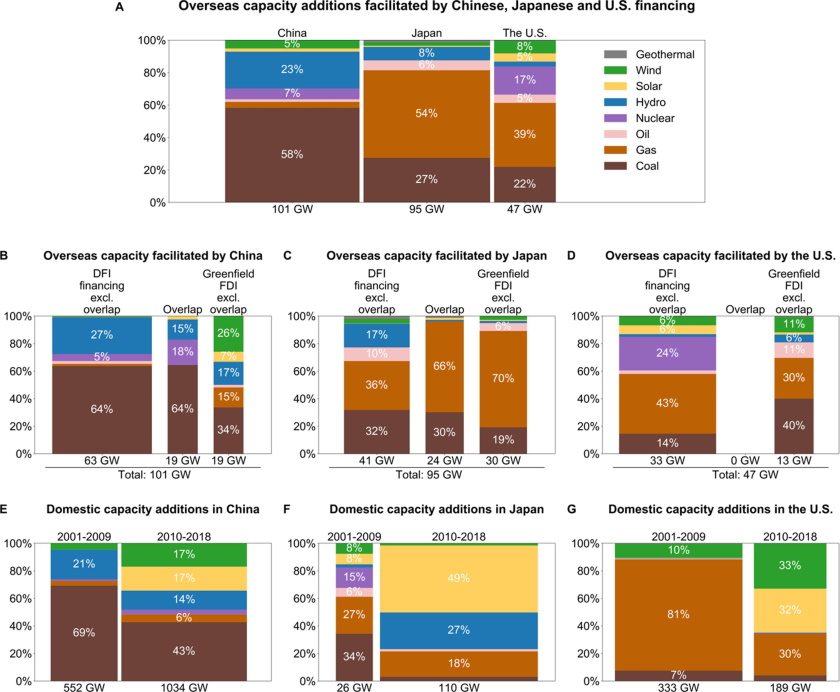
Photo: moritz320 from Pixabay
China, Japan and the United States have directed most of their bilateral financing for power plants abroad to those that run on fossil fuels. Between 2000 and 2018 they funded coal and gas power plants with a combined installed capacity of 243 GW.
Bilateral financing of fossil fuel plants by the three largest economies is yet another piece of evidence that most developed countries are not doing enough to counter climate change. Of note, since the beginning of 2020 and the onset of the COVID-19 pandemic, G20 countries have committed more public money for fossil fuels than to renewables.
Bilateral financing of fossil fuel plants can lock in carbon emissions for decades
Bilateral financing of fossil fuel plants can lock in carbon emissions for decades and impact the ability of the global community to achieve the goals set out in the 2030 Agenda and the Paris Agreement, said a team of researchers from the Boston University Global Development Policy Center and Princeton University.
The majority of facilitated capacity additions are fossil fuel plants (64% for China, 87% for Japan, and 66% for the United States), according to a study called ‘Financing carbon lock-in in developing countries: Bilateral financing for power generation technologies from China, Japan, and the United States’.
The researchers have found the financing commitments from China, Japan, and the US facilitated 101 GW, 95 GW, and 47 GW overseas power capacity additions, respectively.
While multilateral financing has shown signs of moving towards supporting renewable technologies, bilateral finance lags behind in the transition
While multilateral financing has shown signs of moving towards supporting renewable technologies in line with the 2030 Agenda and the Paris Agreement, bilateral finance lags behind in the transition, the authors said.
They analyzed two channels of financing: public financing from the countries’ national development finance institutions (DFIs) and commercial financing in the form of greenfield foreign direct investment (FDI).

Despite being latecomers to international development financing, Chinese DFIs committed USD 112 billion, more than twice the overseas power finance than Japanese DFIs (USD 46 billion), and five times that of US DFIs (USD 21 billion) between 2000 and 2018.
Bilateral financing of fossil fuel plants by China, Japan, and the US will add 24 gigatonnes of CO2 emissions to the atmosphere by 2060.
Funds mostly went to Asia
In geographical terms, both Chinese and Japanese DFIs committed the largest portion of their overseas finance in the sector to developing countries in Asia, whereas US DFIs mostly financed power plants in other regions of the world.
Chinese and Japanese DFIs financed recipient countries like Indonesia, Vietnam, and India, where electricity demand grows rapidly, mostly in support of their coal plants.
For example, Chinese DFIs greatly supported power generation development in Pakistan and Nigeria. Japanese and US DFIs contributed greatly to power plants in the UAE, according to the study.









Be the first one to comment on this article.